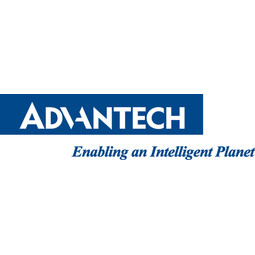公司规模
Large Corporate
地区
- America
国家
- Brazil
产品
- Advantech’s ADAM-6250 digital I/O module
- Advantech’s HMI operator interfaces
技术栈
- Data Acquisition System
- Cloud Computing
实施规模
- Enterprise-wide Deployment
影响指标
- Cost Savings
- Productivity Improvements
技术
- 应用基础设施与中间件 - 数据交换与集成
适用行业
- 药品
适用功能
- 离散制造
- 质量保证
用例
- 流程追踪
- 远程资产管理
服务
- 云规划/设计/实施服务
- 系统集成
关于客户
União Química 是巴西制药行业最大的制造商之一。该公司成立于 1936 年,拥有 3,600 多名员工,是巴西蓬勃发展的制药行业的重要参与者。尽管该公司历史悠久、销售强劲,但其对过时生产方法的依赖阻碍了其发展。具体而言,该公司的管理人员发现,他们的生产线受到生产率低、缺乏有效的质量监控以及缺乏远程连接(无法轻松访问关键生产线数据)的阻碍。
挑战
União Química 是巴西蓬勃发展的制药行业中最大的参与者之一,但其依赖过时的生产方法,导致其发展受阻。该公司的管理人员发现,他们的生产线受到生产率低、缺乏有效的质量监控以及缺乏远程连接(无法轻松访问关键生产线数据)的阻碍。药品制造的一个关键特征是必须仔细记录生产过程的每个步骤以确保合规。这些严格的要求导致制药商将生产信息存储在纸质记录中以供将来参考,但这种方法也使生产经理难以改进流程。
解决方案
研华与 Orange Pharma IT 合作开发了自动数据采集系统,以确保无需手动操作即可实现产品可追溯性,同时还可通过云计算系统实现远程连接。研华的 ADAM-6250 数字 I/O 模块和 HMI 操作员界面构成了此增强型数据采集系统的骨干。ADAM-6250 提供菊花链连接和自动旁路保护、远程监控和移动设备控制以及多个模块设置的组配置功能。研华的 HMI 监控解决方案将高性能平板电脑与低功耗网络终端相结合,使其成为监控智能工厂生产线工作流程的理想流程可视化工具。
运营影响
数量效益

Case Study missing?
Start adding your own!
Register with your work email and create a new case study profile for your business.
相关案例.

Case Study
Case Study: Pfizer
Pfizer’s high-performance computing software and systems for worldwide research and development support large-scale data analysis, research projects, clinical analytics, and modeling. Pfizer’s computing services are used across the spectrum of research and development efforts, from the deep biological understanding of disease to the design of safe, efficacious therapeutic agents.

Case Study
Fusion Middleware Integration on Cloud for Pharma Major
Customer wanted a real-time, seamless, cloud based integration between the existing on premise and cloud based application using SOA technology on Oracle Fusion Middleware Platform, a Contingent Worker Solution to collect, track, manage and report information for on-boarding, maintenance and off-boarding of contingent workers using a streamlined and Integrated business process, and streamlining of integration to the back-end systems and multiple SaaS applications.

Case Study
Process Control System Support
In many automated production facilities, changes are made to SIMATIC PCS 7 projects on a daily basis, with individual processes often optimised by multiple workers due to shift changes. Documentation is key here, as this keeps workers informed about why a change was made. Furthermore, SIMATIC PCS 7 installations are generally used in locations where documentation is required for audits and certification. The ability to track changes between two software projects is not only an invaluable aid during shift changes, but also when searching for errors or optimising a PCS 7 installation. Every change made to the system is labour-intensive and time-consuming. Moreover, there is also the risk that errors may occur. If a change is saved in the project, then the old version is lost unless a backup copy was created in advance. If no backup was created, it will no longer be possible to return to the previous state if and when programming errors occur. Each backup denotes a version used by the SIMATIC PCS 7 system to operate an installation. To correctly interpret a version, information is required on WHO changed WHAT, WHERE, WHEN and WHY: - Who created the version/who is responsible for the version? - Who released the version? - What was changed in the version i.e. in which block or module of the SIMATIC PCS 7 installation were the changes made? - When was the version created? Is this the latest version or is there a more recent version? - Why were the changes made to the version? If they are part of a regular maintenance cycle, then is the aim to fix an error or to improve production processes? - Is this particular version also the version currently being used in production? The fact that SIMATIC PCS 7 projects use extremely large quantities of data complicates the situation even further, and it can take a long time to load and save information as a result. Without a sustainable strategy for operating a SIMATIC PCS 7 installation, searching for the right software version can become extremely time-consuming and the installation may run inefficiently as a result.

Case Study
Drug Maker Takes the Right Prescription
China Pharm decided to build a cloud-based platform to support the requirements of IT planning for the next five to ten years which includes a dynamic and scalable mail resource pool platform. The platform needed to have the following functions: all nodes support redundancy, ensuring service continuity and good user experience, simple and easy-to-use user interfaces for end users and administrators and good compatibility and supports smooth capacity expansion.

Case Study
ELI LILLY ADOPTS MICROMEDIA’S ALERT NOTIFICATION SYSTEM
Pharmaceutical production is subject to a strict set of enforced rules that must be adhered to and compliance to these standards is critically necessary. Due to the efforts of WIN 911’s strategic partner Micromedia, Lilly was able to adopt an alarm notification infrastructure that integrated smoothly with their existing workflows and emergency hardware and protocols. These raw energy sources enable the industrial process to function: electricity, WIN-911 Software | 4020 South Industrial Drive, Suite 120 | Austin, TX 78744 USA industrial steam, iced water, air mixtures of varying quality. Refrigeration towers, boilers and wastewater are monitored by ALERT. Eli Lilly identified 15000 potential variables, but limitations compelled them to chisel the variable list down to 300. This allowed all major alarms to be covered including pressure, discharge, quantity of waste water discharged,temperature, carbon dioxide content, oxygen & sulphur content, and the water’s pH.




